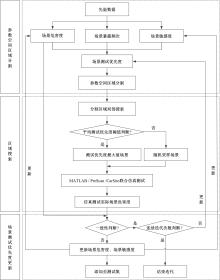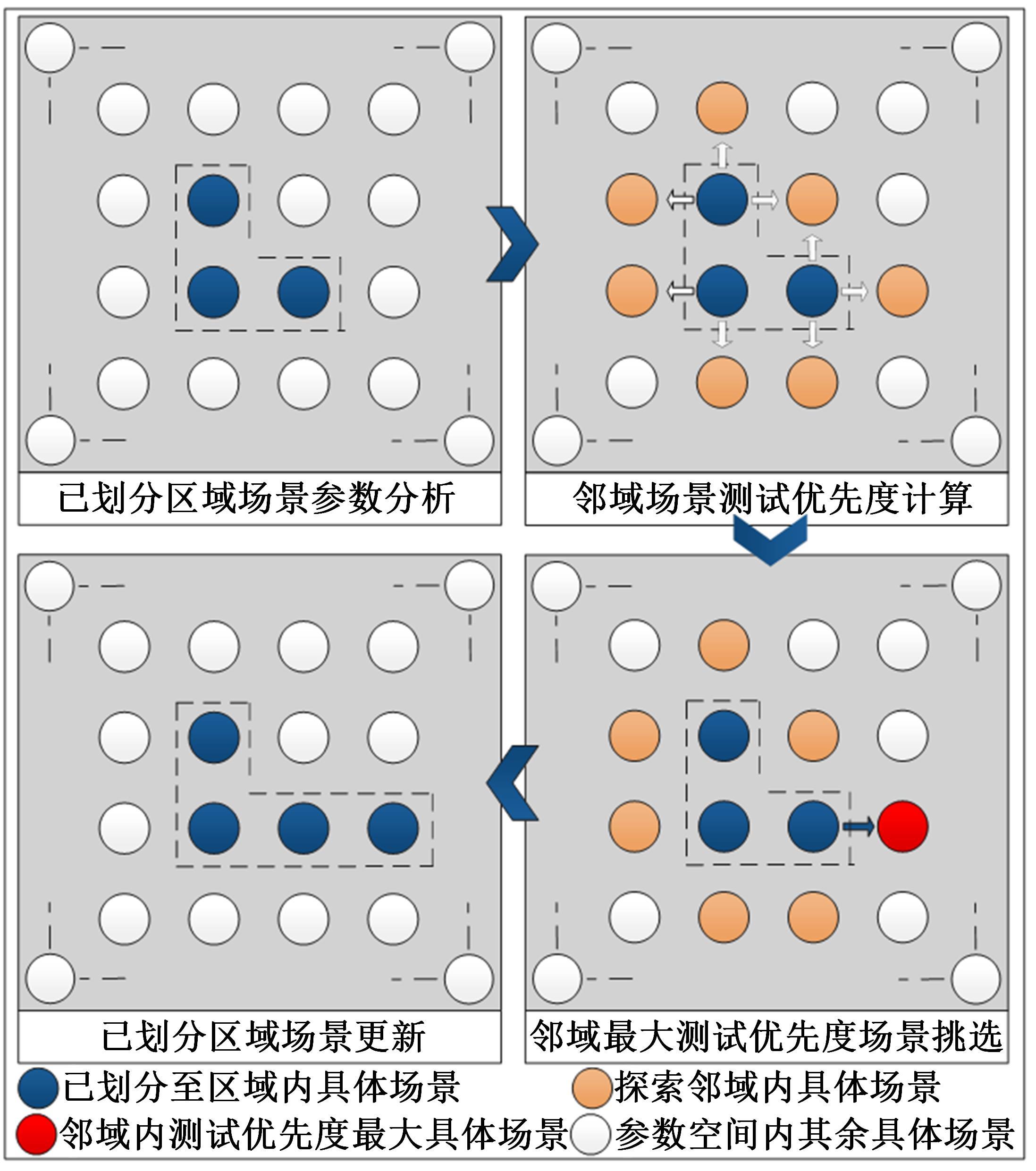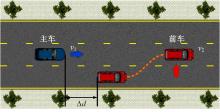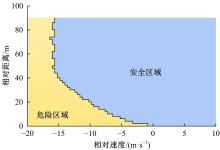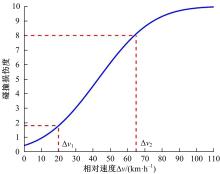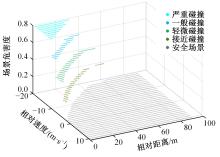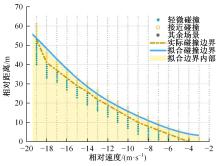Journal of Jilin University(Engineering and Technology Edition) ›› 2023, Vol. 53 ›› Issue (3): 704-712.doi: 10.13229/j.cnki.jdxbgxb20211177
Accelerate test method of automated driving system based on hazardous boundary search
Bing ZHU( ),Tian-xin FAN,Jian ZHAO(
),Tian-xin FAN,Jian ZHAO( ),Pei-xing ZHANG,Yu-hang SUN
),Pei-xing ZHANG,Yu-hang SUN
- State Key Laboratory of Automotive Simulation and Control,Jilin University,Changchun 130022,China
CLC Number:
- U461.91
| 1 | 余荣杰, 田野, 孙剑. 高等级自动驾驶汽车虚拟测试:研究进展与前沿[J]. 中国公路学报, 2020, 33(11): 125-138. |
| Yu Rong-jie, Tian Ye, Sun Jian. Highly automated vehicle virtual testing: a review of recent developmentsand research frontiers[J]. China Journal of Highway and Transport, 2020, 33(11): 125-138. | |
| 2 | 朱冰, 张培兴, 赵健. 面向多维度逻辑场景的自动驾驶安全性聚类评价方法[J]. 汽车工程, 2020, 316(11): 13-18. |
| Zhu Bing, Zhang Pei-xing, Zhao Jian. Clustering evaluation method of autonomous driving safety for multi-dimensional logical scenario[J]. Automotive Engineering, 2020, 316(11): 13-18. | |
| 3 | Wang C, Storms K, Winner H. Online safety assessment of automated vehicles using silent testing[J]. IEEE Transactions on Intelligent Transportation Systems, 2021, 23(8): 13069-13083. |
| 4 | 朱冰, 张培兴, 赵健, 等.基于场景的自动驾驶汽车虚拟测试研究进展[J]. 中国公路学报, 2019, 32(6): 1-19. |
| Zhu Bing, Zhang Pei-xing, Zhao Jian,et al. Research progress on scene-based virtual test of autonomous driving vehicles[J]. China Journal of Highway and Transport, 2019, 32(6): 1-19. | |
| 5 | Riedmaier S, Ponn T, D Ludwig et al. Survey on scenario-based safety assessment of automated vehicles[J]. IEEE Access, 2020, 8: 87456-87477. |
| 6 | Chen W, Kloul L. An advanced driver assistance test cases generation methodology based on highway traffic situation description ontologies[C]∥Knowledge Discovery, Knowledge Engineering and Knowledge Management, Berlin, Germany, 2020:93-113. |
| 7 | 白雪松, 邓伟文, 任秉韬, 等. 一种自动驾驶仿真场景要素的提取方法[J]. 汽车工程, 2021, 43(7): 1030-1036. |
| Bai Xue-song, Deng Wei-wen, Ren Bing-tao, et al. Anextraction method of scenario elements for autonomous driving simulation[J]. Automotive Engineering, 2021, 43(7): 1030-1036. | |
| 8 | Krajewski R, Moers T, Nerger D, et al. Data-driven maneuver modeling using generative adversarial networks and variational autoencoders for safety validation of highly automated vehicles[C]∥The 21st IEEE International Conference on Intelligent Transportation Systems, New York, America, 2018:2383-2390. |
| 9 | Khastgir S, Dhadyalla G, Birrell S, et al. Test scenariogeneration for driving simulators using constrained randomization technique[C]∥SAE World Congress Experience, New York, America, 2017-01-1672. |
| 10 | Huang Z, Lam H, Zhao D. Towards affordable on track testing for autonomous vehicle—a Kriging-based statistical approach[C]∥2017 IEEE 20th International Conference on Intelligent Transportation Systems, NewYork, America, 2017: 1-6. |
| 11 | Schwalb E. Accelerated evaluation of autonomous drivers using neural network quantile generators[C]∥2020 IEEE International Conference on Big Data, New York, America, 2020: 4751-4758. |
| 12 | Zhu B, Zhang P, Zhao J, et al. Hazardous scenario enhanced generation for automated vehicle testing based on optimization searching method[J]. IEEE Transactions on Intelligent Transportation Systems,2021, 99: 1-11. |
| 13 | Zhao D, Lam H, Peng H, et al. Accelerated evaluation of automated vehicles safety in lane-change scenarios based on importance sampling techniques[J]. Transactions on Intelligent Transportation Systems, 2017, 18(3): 595-607. |
| 14 | Jonathan M, Hankey, Miguel A, et al.Dscription of the SHRP 2 naturalistic database and the crash, near-crash, and baseline data sets[R]. New York: Virginia Tech Transportation Institute, 2016. |
| 15 | Minderhoud M M, Bovy P H L. Extended time-to-collision measures for road traffic safety assessment[J]. Accident Analysis and Prevention, 2001, 33(1): 89-97. |
| 16 | Balas V E, Balas M M. Driver assisting by inverse time to collision[C]∥2006 World Automation Congress, Budapest, Hungary, 2006: No.376059. |
| 17 | Butakov V A, Ioannou P A. Driver/vehicle response diagnostic system for the vehicle-following case[J]. IEEE Transactions on Intelligent Transportation Systems, 2014, 15(5): 1947-1957. |
| 18 | 李霖,朱西产,董小飞. 自主紧急制动系统避撞策略的研究[J]. 汽车工程, 2015, 37(2): 168-174. |
| Li Lin, Zhu Xi-chan, Dong Xiao-fei. A research on the collision avoidance strategy for autonomous emergency braking system[J]. Automotive Engineering, 2015, 37(2):168-174. | |
| 19 | Quante L, Zhang M, Preuk K, et al. Human performance in critical scenarios as a benchmark for highly automated vehicles[J]. Automotive Innovation, 2021, 4(3): 274-283. |
| 20 | 吴坚,赵阳,何睿.基于支持向量机回归算法的电子机械制动传感器系统故障诊断[J].吉林大学学报: 工学版, 2013, 43(5):1178-1183. |
| Wu Jian, Zhao Yang, He Rui. Fault detection and diagnosis of EMB sensor system based on SVR[J]. Journalof Jilin University(Engineering and Technology Edition), 2013, 43(5): 1178-1183. | |
| 21 | Feng S, Feng Y, Yu C, et al. Testing scenario librarygeneration for connected and automated vehicles, part I: methodology[J]. IEEE Transactions on Intelligent Transportation Systems, 2021,22(3): 1573-1582. |
| 22 | Doecke S D, Baldock M R J, Kloeden C N,et al. Impact speed and the risk of serious injury in vehicle crashes[J]. Accident Analysis and Prevention, 2020,144:1-7. |
| 23 | Doecke S D, Dutschke J K, Baldock M R J,et al. Travel speed and the risk of serious injury in vehicle crashes[J]. Accident Analysis and Prevention, 2021,161:1-8. |
| 24 | Yong P, Wang X, Peng S, et al. Investigation on the injuries of drivers and copilots in rear-end crashes between trucks based on real world accident data in china[J]. Future Generation Computer Systems, 2017, 86(9):1251-1258. |
| [1] | Yan-tao TIAN,Fu-qiang XU,Kai-ge WANG,Zi-xu HAO. Expected trajectory prediction of vehicle considering surrounding vehicle information [J]. Journal of Jilin University(Engineering and Technology Edition), 2023, 53(3): 674-681. |
| [2] | Ke HE,Hai-tao DING,Xuan-qi LAI,Nan XU,Kong-hui GUO. Wheel odometry error prediction model based on transformer [J]. Journal of Jilin University(Engineering and Technology Edition), 2023, 53(3): 653-662. |
| [3] | Yan-tao TIAN,Yan-shi JI,Huan CHANG,Bo XIE. Deep reinforcement learning augmented decision⁃making model for intelligent driving vehicles [J]. Journal of Jilin University(Engineering and Technology Edition), 2023, 53(3): 682-692. |
| [4] | Ke HE,Hai-tao DING,Nan XU,Kong-hui GUO. Enhanced localization system based on camera and lane markings [J]. Journal of Jilin University(Engineering and Technology Edition), 2023, 53(3): 663-673. |
| [5] | Deng-feng WANG,Hong-li CHEN,Jing-xin NA,Xin CHEN. Failure comparison of single and double lap joints after high temperature aging [J]. Journal of Jilin University(Engineering and Technology Edition), 2023, 53(2): 346-354. |
| [6] | Pei ZHANG,Zhi-wei WANG,Chang-qing DU,Fu-wu YAN,Chi-hua LU. Oxygen excess ratio control method of proton exchange membrane fuel cell air system for vehicle [J]. Journal of Jilin University(Engineering and Technology Edition), 2022, 52(9): 1996-2003. |
| [7] | Ke-yong WANG,Da-tong BAO,Su ZHOU. Data-driven online adaptive diagnosis algorithm towards vehicle fuel cell fault diagnosis [J]. Journal of Jilin University(Engineering and Technology Edition), 2022, 52(9): 2107-2118. |
| [8] | Qi-ming CAO,Hai-tao MIN,Wei-yi SUN,Yuan-bin YU,Jun-yu JIANG. Hydrothermal characteristics of proton exchange membrane fuel cell start⁃up at low temperature [J]. Journal of Jilin University(Engineering and Technology Edition), 2022, 52(9): 2139-2146. |
| [9] | Hai-lin KUI,Ze-zhao WANG,Jia-zhen ZHANG,Yang LIU. Transmission ratio and energy management strategy of fuel cell vehicle based on AVL⁃Cruise [J]. Journal of Jilin University(Engineering and Technology Edition), 2022, 52(9): 2119-2129. |
| [10] | Yan LIU,Tian-wei DING,Yu-peng WANG,Jing DU,Hong-hui ZHAO. Thermal management strategy of fuel cell engine based on adaptive control strategy [J]. Journal of Jilin University(Engineering and Technology Edition), 2022, 52(9): 2168-2174. |
| [11] | Cheng LI,Hao JING,Guang-di HU,Xiao-dong LIU,Biao FENG. High⁃order sliding mode observer for proton exchange membrane fuel cell system [J]. Journal of Jilin University(Engineering and Technology Edition), 2022, 52(9): 2203-2212. |
| [12] | Feng-xiang CHEN,Qi WU,Yuan-song LI,Tian-de MO,Yu LI,Li-ping HUANG,Jian-hong SU,Wei-dong ZHANG. Matching,simulation and optimization for 2.5 ton fuel cell/battery hybrid forklift [J]. Journal of Jilin University(Engineering and Technology Edition), 2022, 52(9): 2044-2054. |
| [13] | Xiao-hua WU,Zhong-wei YU,Zhang-ling ZHU,Xin-mei GAO. Fuzzy energy management strategy of fuel cell buses [J]. Journal of Jilin University(Engineering and Technology Edition), 2022, 52(9): 2077-2084. |
| [14] | Xun-cheng CHI,Zhong-jun HOU,Wei WEI,Zeng-gang XIA,Lin-lin ZHUANG,Rong GUO. Review of model⁃based anode gas concentration estimation techniques of proton exchange membrane fuel cell system [J]. Journal of Jilin University(Engineering and Technology Edition), 2022, 52(9): 1957-1970. |
| [15] | Yao-wang PEI,Feng-xiang CHEN,Zhe HU,Shuang ZHAI,Feng-lai PEI,Wei-dong ZHANG,Jie-ran JIAO. Temperature control of proton exchange membrane fuel cell thermal management system based on adaptive LQR control [J]. Journal of Jilin University(Engineering and Technology Edition), 2022, 52(9): 2014-2024. |
|
||
